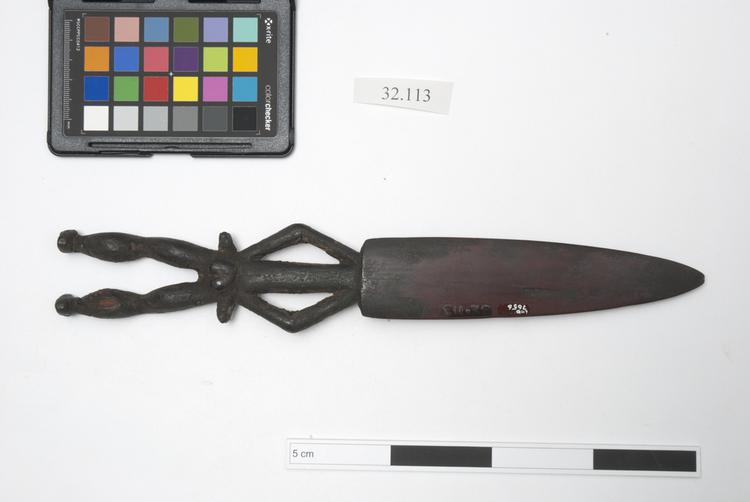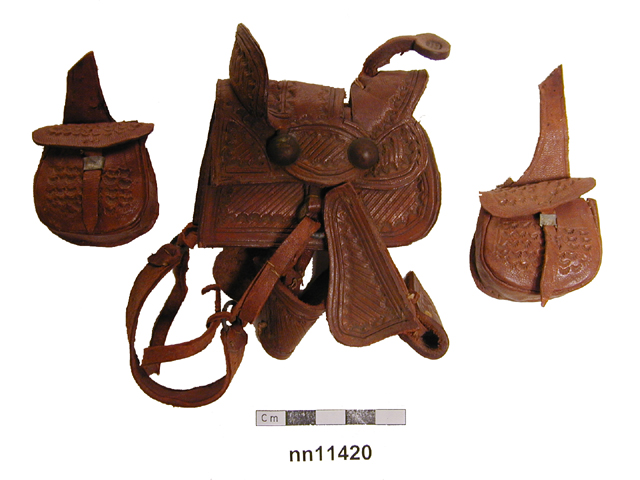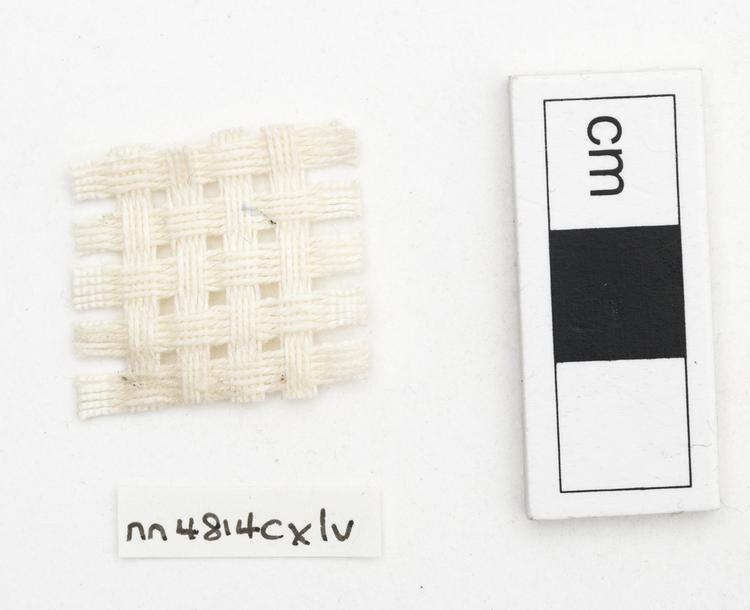
Wooden knife with a lanceolate blade and a handle carved in the form of a human figure standing with hands on hips.
Nalot Knife, Probably Ureparapara, Banks Islands, Northern Vanuatu As elsewhere in the Pacific, Western metal imports from the late 19th Century onwards largely replaced the local wooden food knives of southern Vanuatu. In the northern island groups, however, wooden knives specifically designed for the eating an important ceremonial pudding known as nalot, continued to act as important personal possessions for people. Many chose to be buried with their knives, and these objects were visual expressions of social status. Up until the early 20th Century, both men and women in the Banks Islands traditionally participated in a complex system of graded social ranks called sukwe. Each rank within the sukwe system was like an exclusive club for its members, and entry into each grade was bought by belonging to the grade immediately inferior to it, and paying a fixed price in pigs and strings of shell money (nasum). Inside the men’s ceremonial house (gamal) at the centre of each Banks Islands village, the space was screened off into areas around the hearths of each sukwe grade, where members came together to eat. Holes carved into the handles of such knives symbolise these hearths, and the raised bars across the handle symbolise the partitions between them. Banks Islands food knives incorporating human forms are thought to have belonged to senior grade ranks, and so this knife probably belonged to a wealthy and influential individual. Wood. Late 19th Century. Collected in 1890 by the Rev L.P. Robin and donated to the Horniman Museum by the Melanesian Mission.


































































































































































































































































































































































































































































































































